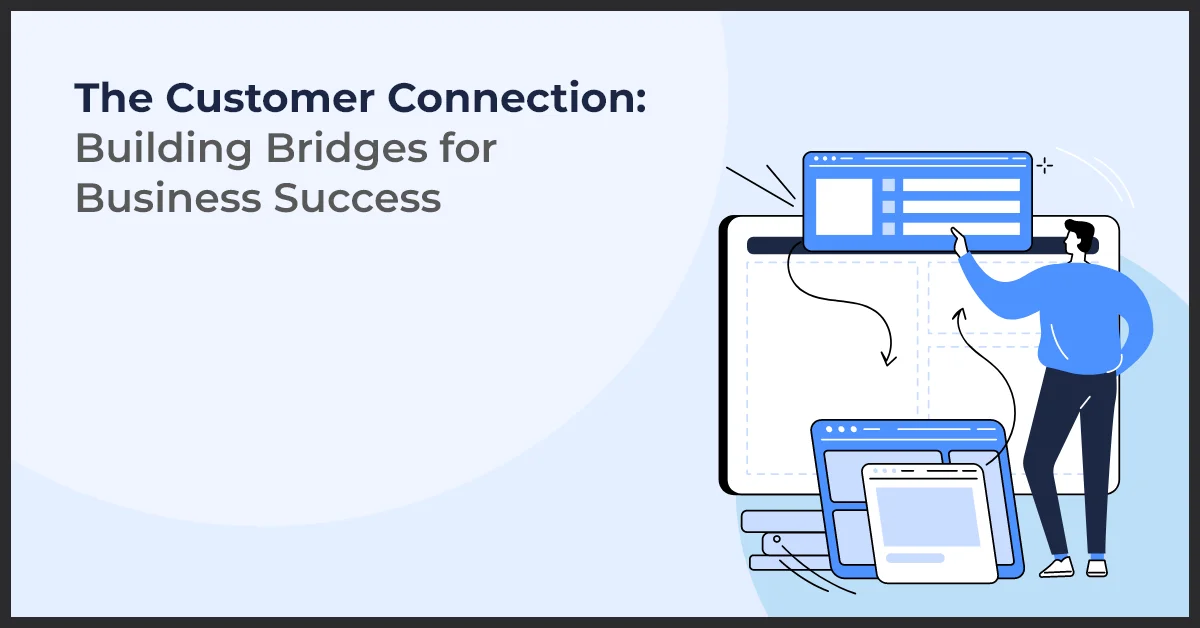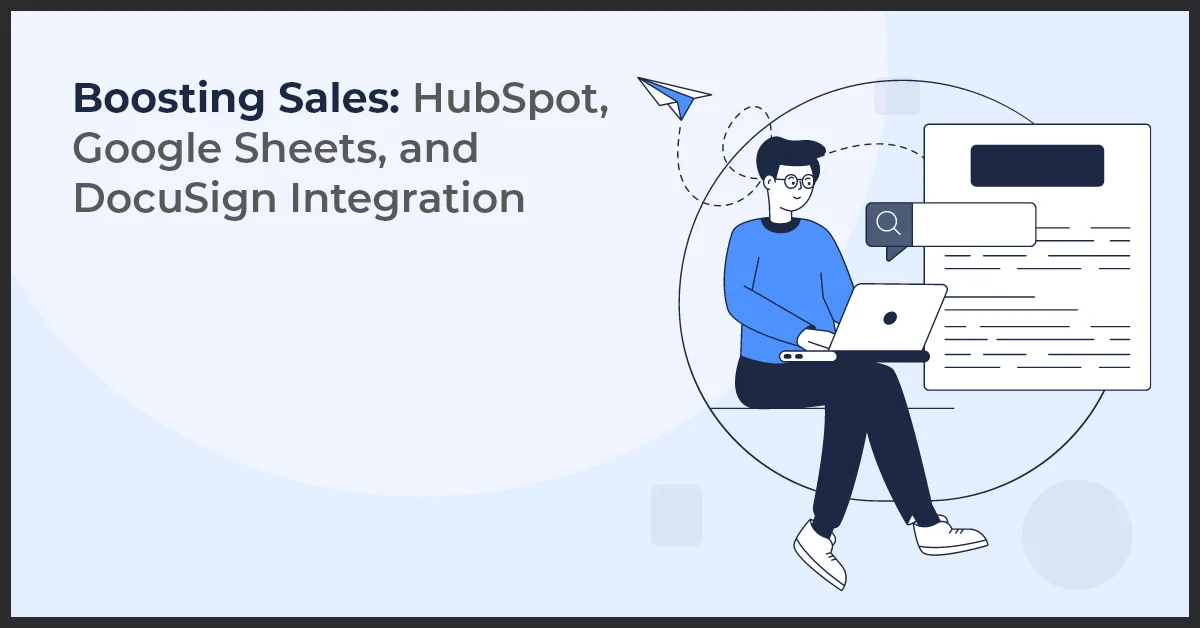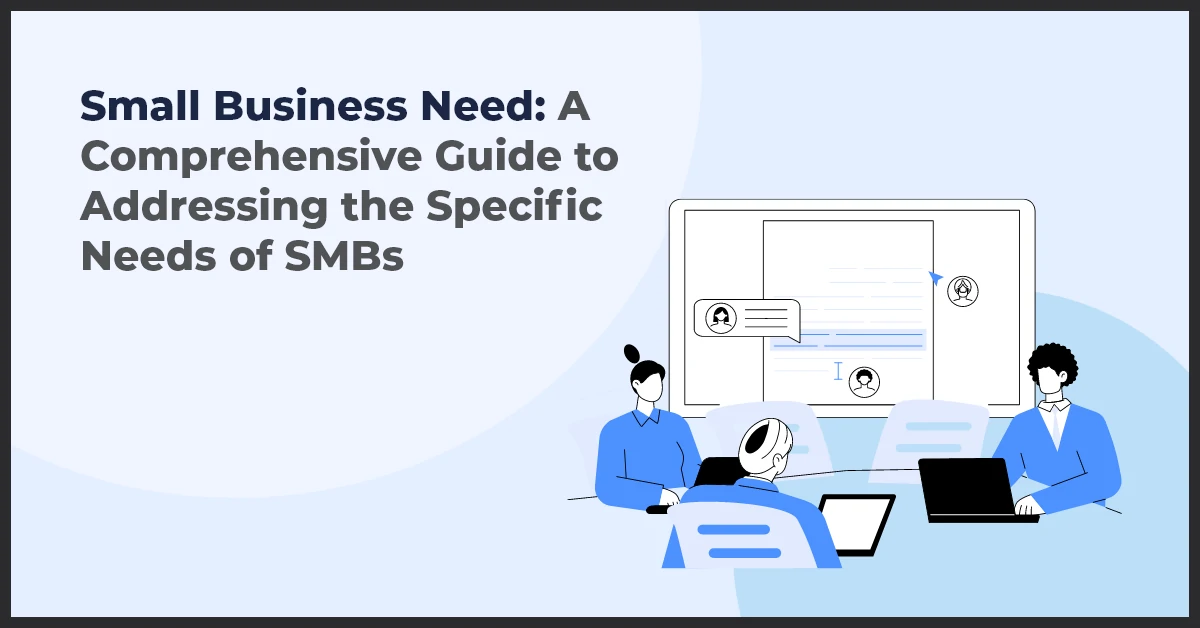Building Strong Customer Connections for Business Success

Published on: May 12, 2023
Updated on: March 11, 2025
2383 Views
- Business
15 min read
Picture this: When you enter a store prepared to buy something, the salesman welcomes you with a blank gaze and robotic pleasantries. How would you feel? Probably, irrelevant and unappreciated, and you might be inclined to take business somewhere else.
Now, flip the script. Imagine entering a store where the employees go above and beyond to make you feel welcome, pay close attention to your requirements, and make sure you have a memorable experience.
Quite a difference, isn't it?
This brings us to the world of customer service, where each and every transaction has the potential to make or break a company. Providing outstanding customer service is not just nice to have in our fast-paced, fiercely competitive environment; it is a game-changer.
Despite the popular belief that "the customer is always right," the customer is actually considered the most crucial factor. And the true magic happens when companies put customer service first. Positive interactions not only encourage repeat business but also transform clients into ardent promoters eager to spread the word about your company to everyone they know.
The relationship between customers and businesses is held together through trust. You gain your clients' confidence when you regularly deliver excellent service. They have faith in your capacity to satisfy their wants, and this confidence sets the door for enduring partnerships that are fruitful for both parties.
The great thing is that providing outstanding customer service can also result in actual financial rewards. Recurring business, greater revenue, and a healthy bottom line are all results of content customers. You make an investment in your own success when you put money into customer service.
It's time to go deeply into the world of bridging relationships for company success now that you are aware of the enormous potential of customer service. Prepare to learn the tricks, techniques, and tactics that will elevate your customer service to a whole new level. So fasten your seatbelts and get ready to set out on a journey where first-rate service is the norm!
Understanding Customer Business Relationships
In the corporate world, transactions come and go. But the capacity to create enduring relationships with their clients is what distinguishes successful businesses. A client-business connection entails more than just exchanging products or services; it also entails erecting barriers that encourage loyalty, trust, and mutual advancement.
A great collaboration is built on a strong customer-business connection. It entails comprehending the particular requirements of your consumers, proactively interacting with them, and continually providing value throughout their relationship with your company. It's about becoming a reliable partner and trusted counsel rather than just a vendor or provider.
Significance of Strong Customer Relationships for Businesses: Fueling Success, One Connection at a Time
Cultivating Customer Loyalty
Customers become devoted supporters who favor your company over rivals when they sense a deep connection to it. They put their faith in your knowledge, depend on your goods or services, and are more inclined to overlook rare errors. A better market position and more revenue are the results of cultivating client loyalty, which also increases customer retention.
Driving Repeat Business
Getting new clients can be expensive and time-consuming. However, you gain from recurring business when you have solid client connections in place. Customers who are delighted and have received excellent value and service are more likely to use your company in the future. They stop requiring regular attempts to attract new customers since they become a consistent source of ongoing income.
Amplifying Referrals and Word-of-Mouth Marketing
The strongest marketing assets you have are satisfied, customers. They voluntarily spread the word about their excellent experiences, broadening the audience for your business through word-of-mouth advertising. You can use this robust referral network when you build solid customer ties.
Customers that are happy with your product or service become brand ambassadors, promoting your company to their contacts and bringing in new business. This organic development reduces marketing expenses while also generating high-quality leads that are more likely to become devoted clients.
Gaining Valuable Insights and Feedback
You can get a thorough awareness of your client's wants, preferences, and pain spots when you have strong customer connections. You can gain important insights that can inspire innovation, improve goods or services, and improve the entire customer experience by actively engaging with them and asking for their input.
This customer-centered strategy frames your company as one that pays attention to and acts upon client feedback, further solidifying the bond and encouraging steadfast loyalty.
Managing Market Challenges
Business environments are susceptible to changes and difficulties. However, companies with solid client connections are better able to overcome these obstacles. Customers that are loyal to you are more inclined to support you during difficult times. This customer assistance can provide you with a competitive edge by enabling you to endure industry changes and economic downturns.
Key Elements of Effective Customer Business Solutions
Identifying Customer Needs and Pain Points: Understanding the Heart of the Matter
Gaining a thorough grasp of your customer's demands and pain issues is the first step in offering excellent customer business solutions.
Here are several methods to facilitate doing precisely that:
a. Active Listening: Give your consumers your full attention. Encourage them to discuss their struggles and aspirations by asking open-ended questions and showing genuine empathy for their circumstances. You can develop a trusting relationship by actively listening to others.
b. Customer Surveys and Feedback: Implement client surveys and feedback tools in order to collect quantitative and qualitative data. With the help of these technologies, you can get direct feedback from clients and discover their preferences and common trouble issues.
c. Customer Journey Mapping: Map out the whole customer experience, noting any areas where there can be friction or difficulty for the consumer. By charting out their experience, you can identify the problems that need fixing and concentrate your efforts on providing workable answers.
Developing Customized Solutions for Customers: Tailoring Your Offerings to Meet Their Unique Requirements
Strategies for developing tailored products that meet client needs: It's time to create specialized solutions after you have a firm grasp of your consumers' wants. Think about the following tactics:
a. Flexibility and Adaptability: Flexibility and adaptability are important since each consumer is different and can have different needs. Offer adaptable, flexible solutions that can be tailored to a person's needs. This might entail giving flexible contracts, multiple price choices, or customized goods or services.
b. Co-Creation and Collaboration: Include your clients in the process of developing your solutions. Ask for their opinions and feedback to make sure the solutions meet their needs. The relationship between the client and the business is strengthened through co-creating solutions.
c. Continuous Improvement: There should be no stagnant solutions. Make appropriate revisions based on client feedback and changing demands as you continuously evaluate the success of your services. To maintain continued relevance and client pleasure, adopt a culture of continual improvement.
Implementing and Measuring the Effectiveness of Solutions: Putting Ideas into Action
Planning and Resource Allocation
Create a thorough implementation strategy that identifies the time, money, and manpower requirements. To ensure the implementation of the solution goes well, clearly define roles and responsibilities. Proper preparation lays the groundwork for success.
Effective Communication
During the implementation phase, communication must be open and understandable. Give your consumers a clear explanation of the solution's specifics while establishing reasonable expectations and emphasizing the advantages they might anticipate. Keeping lines of communication open throughout the process promotes trust and keeps clients interested.
Training and Assistance
Give your customers the training they need to use the solutions you've deployed efficiently. Make sure they have access to continuing support resources, such as technical support or customer service, to handle any difficulties or questions they can run into. Customers can better use the features of the product and have a better overall experience with proactive assistance.
The following techniques can be used to assess the success and impact of solutions that have been put into practice:
Key Performance Indicators (KPIs)
Key Performance Indicators Establish precise KPIs that are in line with the objectives of the solution. These KPIs could include client satisfaction scores, client retention rates, revenue expansion, or expense reduction. Track and analyze these KPIs often to gauge the accomplishments and effects of the solutions put into practice. This information offers insightful information about how well your efforts are working.
Customer Feedback and Surveys
Customer surveys and comments are continuously gathered to determine how customers feel about the solutions that have been implemented. Use surveys, interviews, and other feedback methods to find out how satisfied people are, where they might improve, and what new demands they have. Customer comments are a great source of knowledge for improving and modifying your products.
Case Studies and Success Stories
Highlight case studies and success stories that show the beneficial effects of the adopted solutions. Give specific instances of how your solutions have helped customers, increased productivity, or contributed to their success. These tales act as effective testimonies, inspiring trust in future clients and highlighting the worth of your services.
Leveraging Technology in Customer Business Service
Streamlined Communication
Streamlined communication technology enables organizations and their consumers to communicate more quickly and conveniently. Businesses can respond quickly to client questions and problems thanks to platforms including email, chatbots, social media, and instant messaging.
Self-Service Options
Self-service technologies enable users to solve problems on their own, hence minimizing the need for direct support. Customers get fast access to information through features like FAQs, knowledge bases, online tutorials, and interactive troubleshooting guides, which enable users to handle typical problems on their own.
Customization and Personalization
Business organizations can collect and analyze client data with the use of sophisticated (customer relationship management)CRM systems and data analytics. Utilizing this data will enable you to cater recommendations, anticipate consumer requirements, and customize interactions. Personalization creates loyalty and improves the entire consumer experience.
Enhanced Productivity and Efficiency
Consumer care employees can now concentrate on difficult consumer inquiries and relationship-building since technology automates routine activities. Automated ticketing, routing, and case management systems guarantee the effective processing of client requests, cutting down on response times and raising the standard of service.
Benefits of Adopting Technology in Customer Service: Navigating the Digital Landscape
Increased Effectiveness
Technology speeds up reaction times, minimizes human labor, and simplifies procedures. Businesses can enhance operational efficiency and better handle customer inquiries by automating repetitive operations and putting in place effective procedures.
Improved Client Experience
Technology offers options for real-time communication, self-service, and personalization. This makes it possible for companies to offer a smooth and positive consumer experience. Customers can interact with businesses right away, receive customized suggestions, and obtain information and help at their convenience.
Data-Driven Insights
Thanks to technology, organizations can collect and analyze consumer data to find insightful information. Businesses can better understand consumer behavior, interests, and requirements by utilizing data analytics. These revelations can assist in strategic decision-making, enhance service provision, and promote corporate expansion.
Challenges of Adopting Technology in Customer Service: Navigating the Digital Landscape
a. Initial Investment and Integration: Adopting new technologies frequently necessitates an initial commitment, both in terms of cash resources and integration efforts with current systems. To ensure a seamless integration process, businesses must carefully evaluate the compatibility and scalability of the chosen technology.
b. Training and Change Management: Putting new technology into use could call for training initiatives as well as change management projects. For employees to use technology effectively, they must have the requisite training and knowledge. During the transition stage, difficulties like upskilling requirements and resistance to change might arise.
c. Data Security and Privacy: As technology is used more often, it is important to protect consumer data. To safeguard consumer information, foster trust, and adhere to applicable legislation, businesses must prioritize data security and privacy safeguards. A company's brand and customers' confidence might suffer severe harm as a result of data breaches and privacy issues.
Strategies for Attracting and Retaining Business Customers
Identifying Target Business Customers: Hitting the Bullseye
Based on factors like industry, company size, geography, and particular demands, create complete profiles of your prospective business clients. To target your marketing efforts, comprehend their needs, aspirations, and preferences. To obtain an understanding of your target market's wants, difficulties, and purchasing patterns, conduct research on them. To improve your targeting strategy, consider analyzing market trends, rival plans, and client feedback.
Marketing and Sales Tactics for Acquiring Business Customers: Reeling Them In
Targeted Messaging and Value Proposition
Create persuasive marketing messages that relate directly to the requirements and issues of your target company customers. See also targeted messaging and value proposition. When describing the special value and advantages your goods or services provided, make sure to emphasize how they can help customers address their particular challenges.
Inbound Marketing
Utilize social media, SEO, and inbound marketing to draw in new clients for your organization. Make educational and worthwhile material that answers their problems and positions you as a thought leader in your field. Improve the search engine optimization of your website to boost lead creation potential.
Account-Based Marketing
Engage in account-based marketing, concentrating on tailored outreach to selected target accounts. Adapt your marketing strategies to the particular requirements of each company client, showcasing your comprehension of their problems and providing unique answers.
Retention Strategies and Customer Loyalty Programs: Keeping Them Coming Back
Personalized Relationship Management
Assign specialized account managers or customer success teams to forge close bonds with your corporate clients. Personalize your help, be proactive in your communication, and follow up frequently to better understand your client's changing requirements and offer specialized solutions.
Customer Loyalty Programs
Implement loyalty programs that honor ongoing support from company clients. Based on their degree of participation and loyalty, provide rewards like discounts, special offers, or access to premium services. To increase consumer loyalty, promote word-of-mouth recommendations, and provide a sense of exclusivity.
Exceptional Customer Service
By providing timely and dependable help, you can provide great customer service. You can demonstrate that you respect their business by promptly responding to their questions and complaints. Strive to consistently surpass customer expectations, and aggressively seek feedback to enhance the quality of your services.
Ongoing Value Delivery
Show your company clients the value of your goods or services on a consistent basis. Provide continuing training, information on brand-new functions or improvements, and instructional materials to assist customers to get the most out of your business's engagement with them.
Measuring Customer Business Outcomes and Satisfaction
Customer Lifetime Value (CLV)
The overall value a client contributes to your business over the course of their relationship with you is measured by CLV. It provides guidance for decisions on resource allocation and client retention tactics and aids in evaluating the long-term profitability of customer relationships.
Customer Satisfaction (CSAT) Score
The amount of client satisfaction with your goods, services, or interactions is measured by CSAT. It gives information about how successfully you satisfy client expectations and is often measured through surveys or other feedback systems.
Net Promoter Score (NPS)
NPS measures the possibility that consumers will refer others to your business. It aids in determining consumer loyalty, acts as a gauge of client happiness, and has the ability to spur organic development through recommendations.
Churn Rate
The percentage of consumers that cease doing business with you within a certain time frame is measured by churn rate. By monitoring turnover, you can spot potential problems and take preventative action to keep clients and reduce attrition.
Continual Improvement Based on Customer Satisfaction Data: Listening and Adapting
Collect and Analyze Customer Feedback
Utilize surveys, interviews, internet reviews, and social media to get feedback. To find patterns, places for development, and chances to improve the client experience, analyze the data.
Act on Customer Insights
Utilize the input to inform choices and adjustments that will better serve customers and solve their concerns. Improves that will have the most impact should be prioritized, and you should let customers know what you're doing about it.
Foster a Culture of Customer-Centricity
Integrate a customer-focused approach throughout your company. Encourage staff members of all ranks to actively hear consumer feedback and apply it to their regular job. Frequently convey the value of client satisfaction and the company's dedication to ongoing development.
Iterate and Adapt
Understand that achieving customer happiness is a continuous activity. Keep an eye on consumer feedback, monitor performance indicators, and iterate on your goods, services, and procedures in response to shifting demands and expectations.
Conclusion
For a business to succeed over the long run, successful client interactions are essential. Put client service first, cultivate trusting connections, and offer specialized solutions to increase reputation, earnings, and loyalty. Implement loyalty programs, evaluate your customer service, and improve your marketing strategies. Ask for feedback, go above and above, and adjust to the demands of the client.
Reach out to us at info@growthnatives.com or call +1 855-693-4769 to discover how our expertise can supercharge your customer service efforts and drive unparalleled success.
Frequently Asked Questions
Customer connection refers to the emotional and relational bond between a business and its customers, fostering trust, loyalty, and engagement through positive interactions and personalized experiences.
Build bridges by providing excellent customer service, actively listening to feedback, personalizing interactions, maintaining consistent communication, and delivering on promises, creating a trustworthy and reliable relationship.
Strong customer relationships lead to higher customer satisfaction, increased loyalty, repeat business, positive word-of-mouth, and a competitive edge, ultimately driving revenue and long-term success.
A strong customer connection enhances retention by fostering loyalty, trust, and satisfaction, encouraging customers to stay with the brand, make repeat purchases, and become advocates.
Strategies include providing exceptional customer service, offering personalized experiences, implementing loyalty programs, engaging through consistent communication, soliciting and acting on feedback, and creating a community around the brand.



